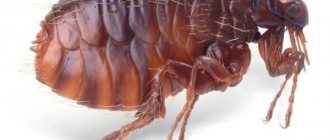In the kitchen, every caring housewife must have an assortment of cereals: buckwheat, rice, wheat, semolina, oatmeal and pearl barley. By including cereal dishes in your daily menu, you can get a nutritious, varied and healthy table. Cereals have a long shelf life, but if stored incorrectly or for too long, they create a threat of pests. They especially love bulk products: bread grinder, red flour beetle, flour bug, food moth.
To protect cereals from the appearance of tenants in them, you should follow the basic rules for their storage, starting from the day of purchase. Basic methods of protection.
Using spices
Shelves and cabinets with containers filled with cereals and flour can be made unpleasant for pests by placing dried cloves, garlic, bay leaves or red hot pepper pods on them. You can also put a small amount of spices inside the jar, but you will have to rinse the cereal well before cooking.
How to get rid of bugs in cereals and prevent them from appearing again
Tips for storing cereals
Each cereal will be stored in a separate container, which must be thoroughly washed, sterilized and dried. The slightest drop of water will ruin the entire jar or container. Before closing the lid on the jar, cover the neck with paper and then rotate the lid. As a precaution, place bags filled with salt next to the containers.
If bugs have already taken up residence in your cabinet, place lavender and chestnuts on the shelves.
As for air humidity, it should not be more than 70%. A sudden increase in temperature can cause food spoilage. +15-18C is the optimal storage temperature.
Neighborhood check
Periodic inspection of all cereals for the presence of food pests is mandatory. If you find the slightest hint of them, go through all the supplies, throw away the unusable ones, treat the surfaces with soapy water, paying special attention to the cracks between the walls.
The question of how to protect cereals from pests is very important and relevant. Having appeared in one of the types of bulk products stored at home, the bugs rapidly multiply and spread around, capturing more and more new places and infecting food products that come their way. Getting rid of them once and for all is difficult and painfully difficult. It will take a lot of time and every effort. It is easier to prevent their occurrence than to waste time and effort fighting them later.
Shelf life
Cereals are stored for a long time only when favorable conditions are created for them. The taste, of course, changes over time, but the quality remains the same. Storage time is several months, but depends on the type of cereal itself. Refrigeration may extend shelf life. If you do not have storage conditions, then you do not need to purchase large quantities of bulk products at once. Rice, corn, and buckwheat do not absorb odors and are stored for a long time. Flour and semolina are kept in the refrigerator for a whole year. In any case, inspect your supplies frequently for insects.
Package
Under no circumstances should supplies be stored in opened original packaging. Oxygen ingestion leads to fat oxidation. As a result, the cereal spoils and acquires a rancid taste. If there is no special storage container, the factory bags must be tightly closed with a clothespin or clamp.
The ideal container for cereal is glass. These can be jars or containers with tight lids.
All other materials have significant disadvantages:
- Plastic containers quickly become cloudy, and flour (cereal dust) concentrates on them.
- In plastic bags, the grain “suffocates”, becoming tasteless. In addition, it will not be difficult for pests to chew through such a package.
- Metal boxes can quickly rust and deteriorate without providing proper sealing. Any metal container is opaque and not very convenient to use.
- Using perforated bags can result in grain becoming damp or infested with bugs.
It is recommended to indicate on the container the date of manufacture and expiration date of the cereal, marked on the original packaging.
See also:
Self-isolation rules for coronavirus in Moscow and the world in 2020
Folk remedies
Folk remedies are effective and safe for people and pets. That is why housewives resort to them first. Here are several ways to get rid of cereal moths.
| Strawberry soap and lemon or orange peels | As you know, citrus peels emit a bright aroma that moths cannot tolerate. This repellent will reliably protect things and textiles from uninvited guests and scent items in the closet. |
| Black and allspice, tobacco, cloves, rosemary | The spicy smell of allspice and other seasonings effectively repels moths and creates an unfavorable environment for breeding offspring. |
| Laundry soap | Potato and clothes moths cannot live normally and produce offspring if laundry soap is nearby. |
| Vinegar and garlic | Diluted vinegar is often used to treat cabinets for preventive purposes. Placing garlic cloves in boxes works the same way. Butterflies cannot tolerate the persistent, aromatic root vegetable. |
| Fir oil | A study of essential oils showed that fir oil was effective in the fight against domestic insects. Apply the oil to a cotton pad and wipe the surfaces where traces of moths have been noticed. |
| Caucasian chamomile | This product is used in dry form - sachets of several grams are made and laid out around the apartment. |
| Chestnuts | Dried chestnuts are used to layer clothes and home textiles, thus preventing the appearance of butterflies. |
| Houseplants coleus (nettle) and geranium (pelargonium) | These indoor flowers have a bright aroma that insects cannot tolerate. Flowers placed around the room will repel insects and will not provide comfort for reproduction. |
| Lavender | The fastest way to get rid of moths and other pests in the house is lavender and its oil. It has long been known that sprigs should be kept in all wardrobes, and lavender oil should also be used on surfaces and upholstered furniture. |
| Sagebrush | The smell of wormwood twigs has an unusual property: it can disorient adult moths in space, thus the life cycle is disrupted and the pests disappear. |
| Newspapers | Printing ink is known to repel insects. Thus, things arranged with newspapers will remain untouched by harmful insects. |
| Vinegar | To treat surfaces with vinegar, you need to heat two tablespoons, then place the hot liquid in a cabinet for about 10 minutes. This time is enough to kill both larvae and adults with acid vapor. |
Rules for storing sugar and flour
Large bags weighing 10 kg are never stored on the floor, no matter how convenient it may be for you. There must be a stand. Lemon zest will protect you from pests. Place the pieces in the bag and problem solved. You can make your own canvas bags for flour and sugar by sewing ties on top for convenience. The bag is first soaked in saline solution and dried without rinsing. This is reliable protection against insects.
Air humidity should be no more than 75%. Otherwise mold will occur.
Where do cereal black bugs come from?
Manufacturers who carefully monitor product quality necessarily subject their products to additional heat treatment.
Cereal bugs can enter an apartment or house through contaminated products brought from the store. The most likely sources of infection are cereals, flour, dried fruits, spices, and herbal teas.
Harmful insects easily enter through various openings from the street. They do not bite and do not harm people's health.
To get rid of a bug in your cereal, you need to carefully inspect other products in the kitchen cabinet. They spread quickly and lay larvae.
Note! Flour beetles and red flour beetles are infested in industrial enterprises, so they end up in the house along with low-quality cereals.
Insects can live in bread factories or bakeries. They can damage crackers, cookies, biscuits and get into the house along with flour products.
How to choose
Before purchasing the cereal, you should carefully inspect it. Make sure it was in proper conditions on the store shelf. Check the humidity level and the tightness of closed packages.
The presence of lumps or dark spots among the grains, and even more so among various insects, indicates the low quality of the product. It is not worth buying such products. But this can only be seen if the product is packaged in a transparent bag . If the packaging is made of paper or cardboard, there is nothing else left to do but check the release date of the product and its expiration date. It’s good if the cereal is not older than 2 - 4 months.
I recently came across an expert article about how to properly store cereals and pasta. And it turned out that I was doing a lot of things wrong. I want to share the storage rules with channel readers.
Where to store
It turns out that according to GOST, the storage place for cereals should, most importantly, be dry. But whether it is heated or not, it doesn’t matter. There should be no sudden temperature changes. That is, if you store cereals on a loggia, then it must be closed and insulated. The pantry and cabinets in the kitchen are a suitable place.
I used to store pasta in the pantry. But it turns out that for their long-term storage you need a cool place. If this is not the case, then it is better not to stock up on pasta for future use.
The storage space must be prepared in advance. To do this, wipe all internal surfaces with a cloth and a solution of laundry soap. And then dry well. This will prevent the appearance of food moths and fungi.
Preparing cereals for storage
Do not store cereals in factory bags. They are rarely completely sealed. If they already contain food moth larvae, then soon nasty butterflies will start flying around the apartment, which are quite difficult to get rid of. Before placing the cereal in a container, keep it in the freezer for a day or bake it in the oven on a baking sheet. This way you will definitely get rid of the larvae.
Compact storage containers
How to store cereals and pasta
Best in glass or ceramic containers
.
Transparent ones are suitable if you are going to store them out of the light. The main rule is an airtight lid. For additional prevention against bugs and moths, add dried orange or lemon zest to jars. A dried hot pepper pod will also work. As for pasta, it is better to store it in its original packaging. Memo for the hostess:
So, let's summarize. Proper storage is:
- dry
- purely
- dark
- not hot
- with pre-treatment
Glass and ceramic containers
Improper storage:
- On hand: near the stove or sink, where it’s hot and humid.
- Remove the cereal with a damp spoon and leave the jar open for a long time.
- Add a new portion to the cereal container without consuming the old one.
IMPORTANT!
- Pasta is not afraid of moths and bugs. The main thing is to store them in a cool place.
- Millet, semolina, corn, oatmeal and rice spoil the fastest. This is due to their high lipid content.
- Technologists believe that flour and products made from it can be stored for a long time without losing their qualities. But the same cannot be said about cereals. Over time they lose their taste
Observe shelf life
Proper storage periods
- Pasta – up to one and a half years.
- But, if eggs are added to them - six months maximum.
- Buckwheat - up to two years.
- Rice - up to one and a half years.
- Peas - up to two years.
- Semolina - up to 10 months.
- Wheat, barley, corn cereals - up to 10 months.
- Oatmeal - six months.











